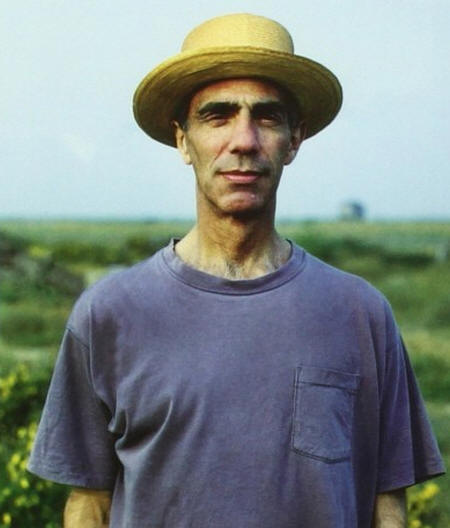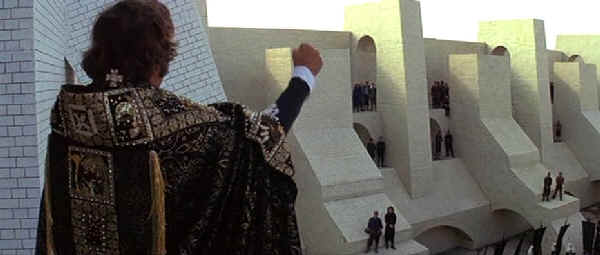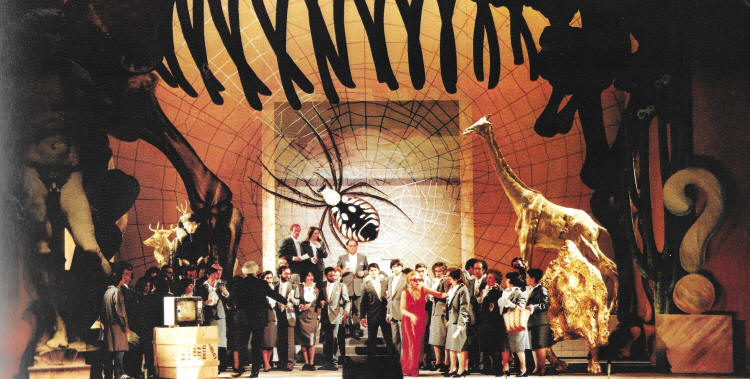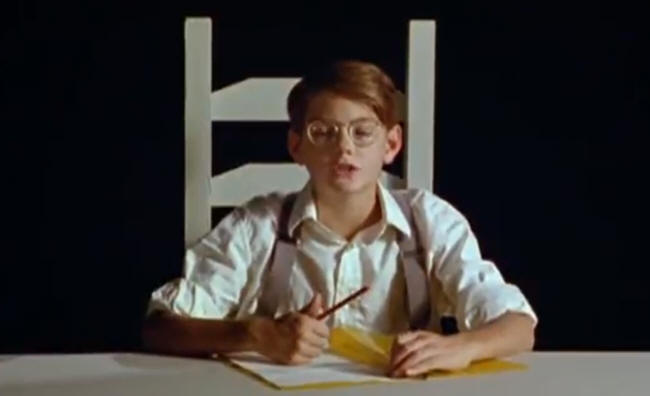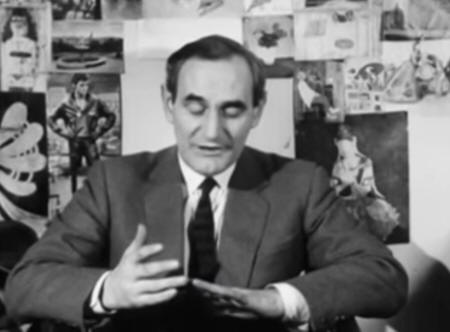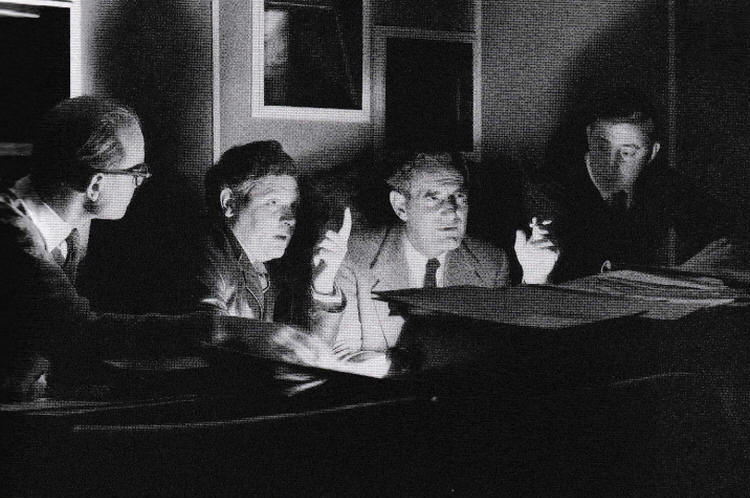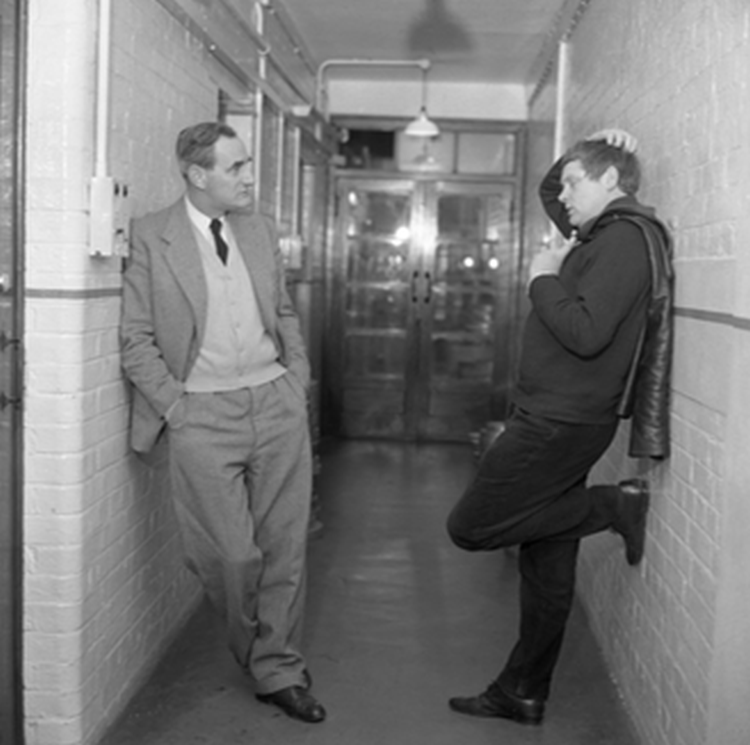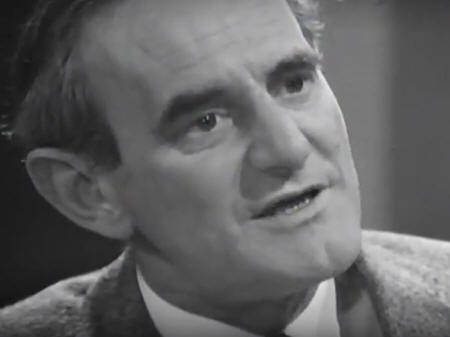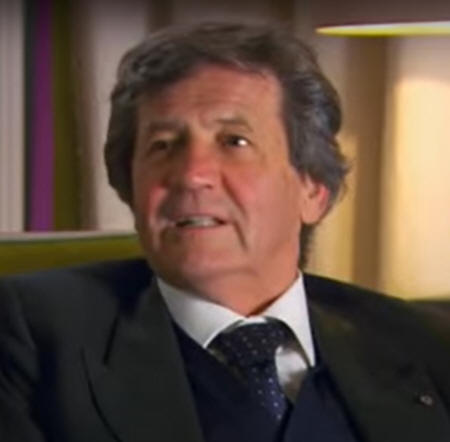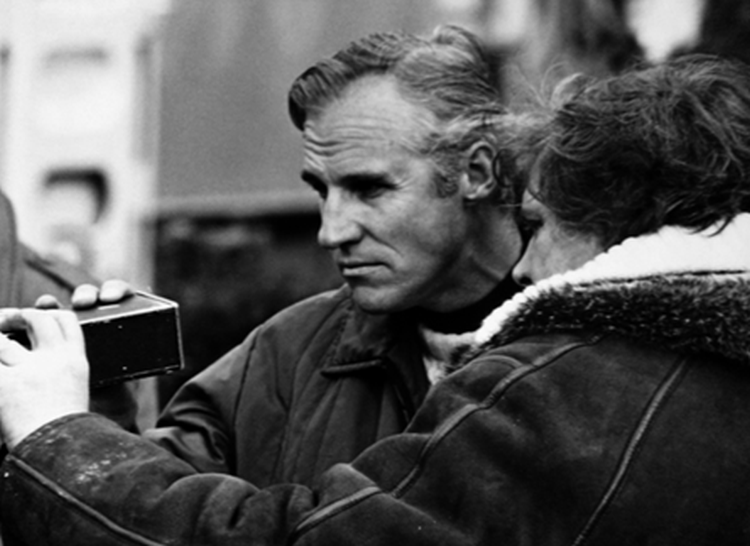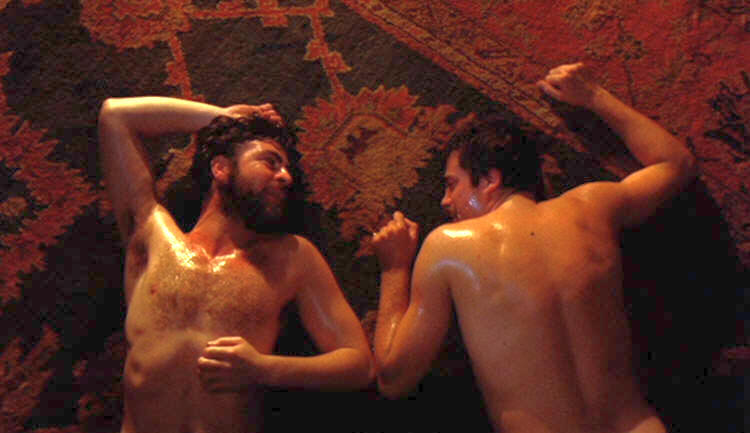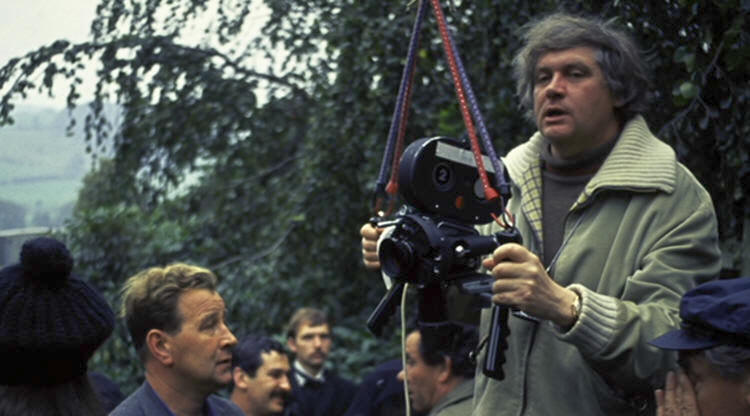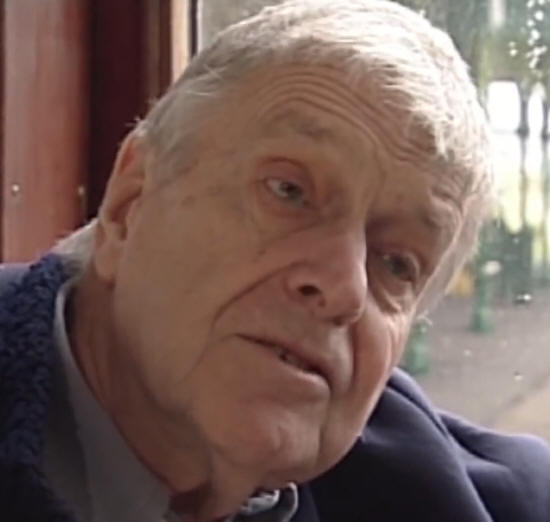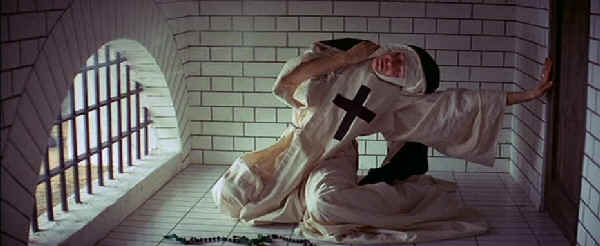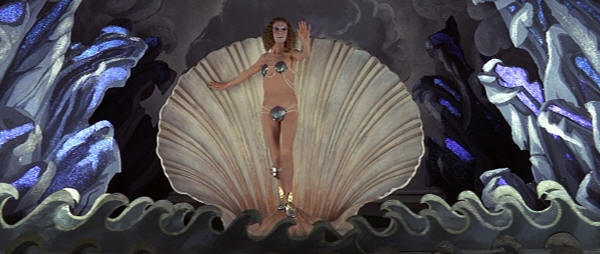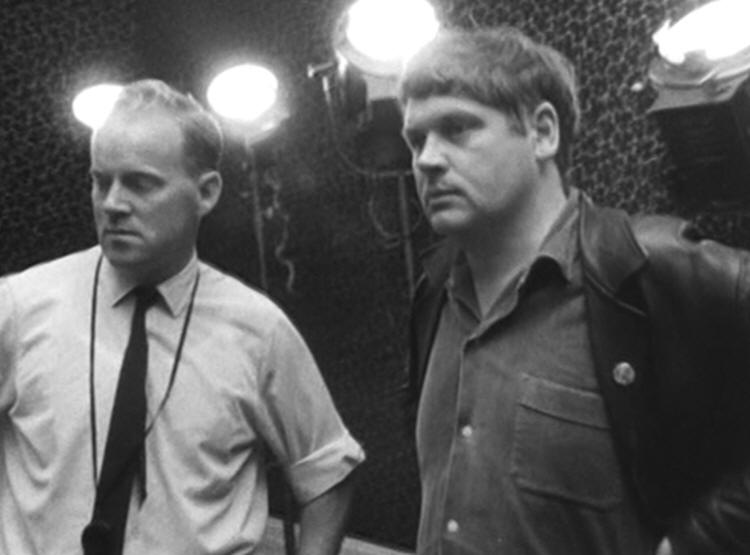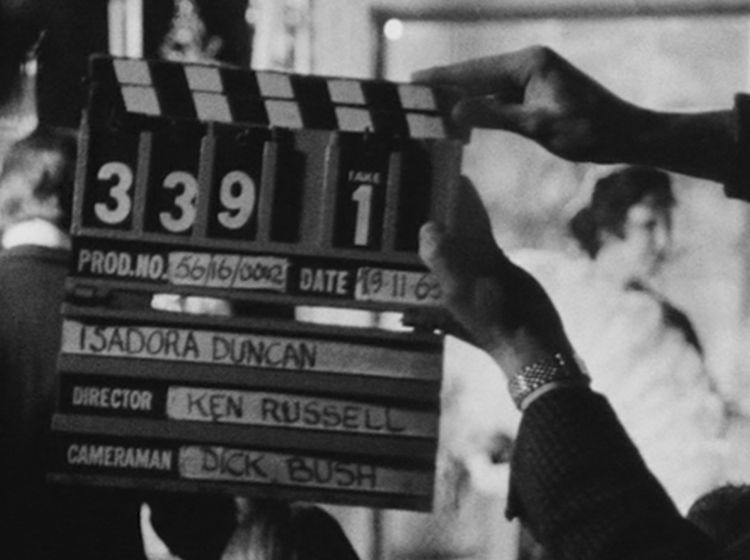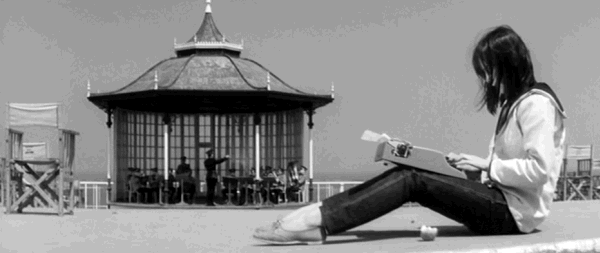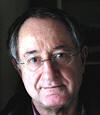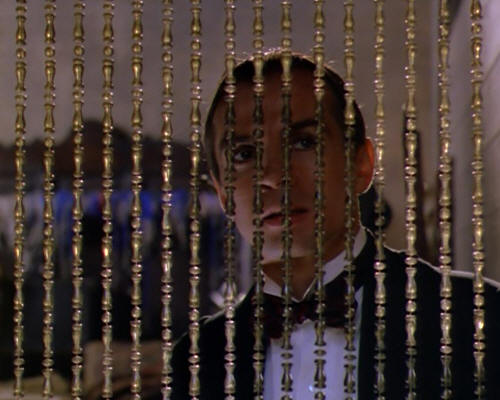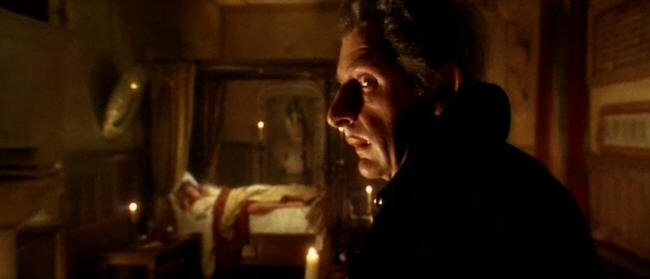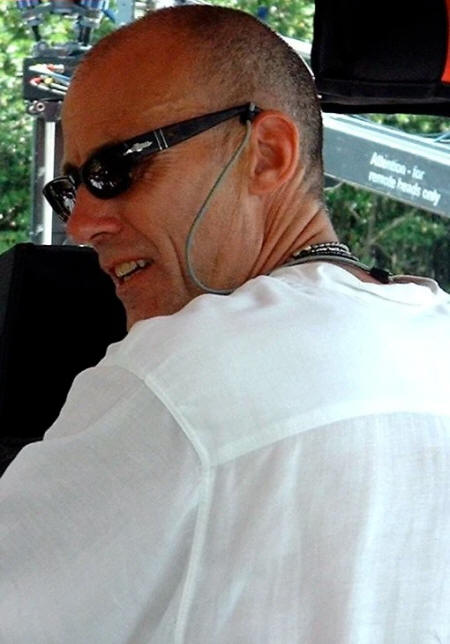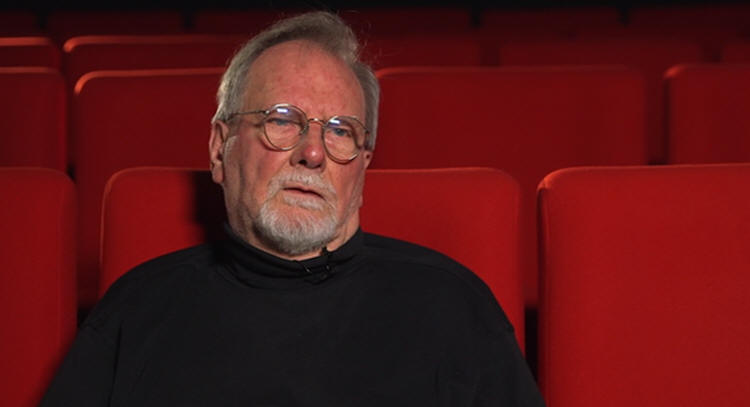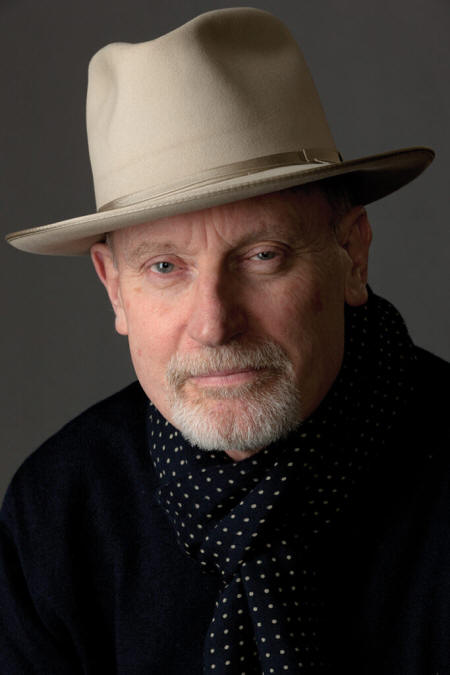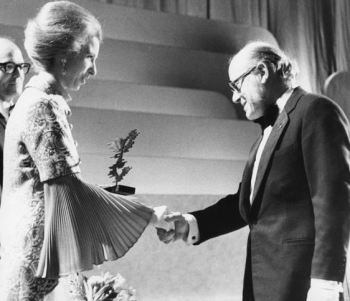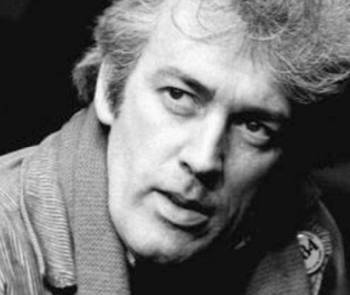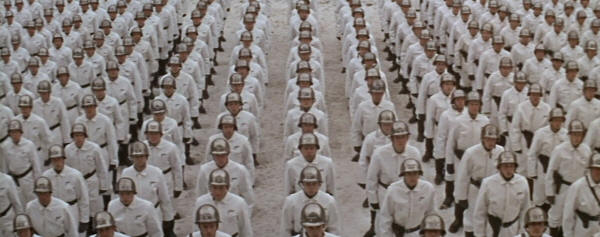|
Behind the camera Just as Ken has a loyal band of actors, so he also uses the same technicians and behind the scenes people again and again. Some, such as Derek Jarman, achieve fame in their own right.
Derek Jarman
Derek Jarman provided the sets for The Devils (the giant brick walls, below), Savage Messiah and the opera The Rake's Progress (second below).
He went on to establish himself as a film director in his own right. He is heavily influenced by Russell though he is even more experimental and even less commercial. His last film Blue has a blank (blue) screen and consists of people with AIDS talking. Jarman died shortly afterwards of AIDS. Below from his film biography of Wittgenstein.
The obituary by Colin MacCabe, The Independent 21 Feb 1994 (here) states "...In January 1970, however, he shared a train ride from Paris with Janet Deuter, a teacher at Hornsey and a friend of Ken Russell. Two days later Russell asked him to design The Devils (1971) and their collaboration was to span both that film and The Savage Messiah (1972) [sic- the title is Savage Messiah]". The image of Jarman come from the cover of the book Derek Jarmans Garden with photos by Howard Sooley. The scene from the opera is in Il Maggio Musicale Fiorentino, I Grandi Spectacoli II, Raffaele Monti. The other images are from the films The Devils and Wittgenstein. Huw Wheldon
The man behind the BBC´s Monitor series with films by John Schlesinger, then Ken Russell. Huw Wheldon appears introducing many of the tv films. Ken's autobiography s dedicated to Huw, and Ken when talking of his television days always mentioned his admiration of Wheldon. Huw Wheldon was born in 1916 in Wales and brought up by God-fearing parents. He fought in the first world war and was awarded the Military Cross for bravery. The BBC "took his fancy" so he acquired a television in 1951 and watched it for hours to learn what it was about. He entered the BBC working as a publicity officer. Huw Wheldon moved to presenting programmes, then of overseeing the Monitor series which he ran "like a stern but kindly uncle... But the style could be deceptive... 'Nothing was ever done which I didn't agree from beginning to end'. He died in 1986. (biographic details and following two images from Sir Huge (sic) The Life of Huw Wheldon by Paul Ferris, 1990). Monitor editor Allan Tryer says "Huw was always determined that it would be really a film prograrnme, but what he didn't want was what they do so such of today, a journalist caning along, punishing a microphone under a chaps chin and asking him a series of questions which the chap answer as best he could. Huw wanted the questions in voice only and no microphone every to be in front of the camera... in itself was something new in style. So what happened that we got into the habit of sort of film stories on an artistic theme. It didn't sort of start like that but it gradually evolved like that" (from the interview of Allan Tryer by Stephen Peat, 14 March 1989, from the excellent British Entertainment History Project- click here). Ken talks of what he learned from Wheldon and says it was as if Wheldon ran the only British film school (from Sir Huge).
Huw, Russell and editors discuss work in progress, below Huw and Ken in discussion.
Images from A Bit of a Devil directed by Eleanor Horne here, from Michael Bradsell interview on the Great Masters DVD, from Huw Wheldon Interviews Alfred Hitchcock. Melvyn Bragg
He joined Huw Wheldon's Monitor and teamed up with Ken. Bragg was a trainee at the BBC and "asked for an attachment to Monitor because it was the only programme he had ever seen. Wheldon asked him why he wanted to join Monitor. Bragg said that he didn't, he preferred radio. Wheldon was delighted at such contrariness and offered him a place... his first opportunity came when Ken was making The Debussy Film" (from Sir Huge by Paul Ferris, ch 7). Bragg later became editor and arts presenter on the South Bank Show for London Weekend Television. He presented the programme for 33 years. He commissioned Ken Russell to do a number of documentaries. He appears in "A British Picture". He wrote the script for The Music Lovers as well as both parts of Clouds of Glory, and the Monitor programs Isadora, Debussy, Roussou. His work on TV also includes the interview with the dying Dennis Potter, where Potter has to stop regularly to take morphine to stop the pain of cancer. Other work by Bragg includes a very good documentary about Peter Maxwell Davies (see Song and Dance Men page). Bragg is an established novelist. Ken and Melvyn once had a dispute and each said they would never work with the other again. I wrote to him and said it was a pity and he kindly replied saying he hoped they would work together sometime. The first time I met Ken (shortly after) I told Ken about this, and told him Melvyn said he wanted them to work together again. Ken said that was interesting. During our conversation Ken's mobile phone rang and it was Melvyn. Image from the film A Bit of a Devil directed by Eleanor Horne here. Billy Williams
Cinematographer on Russell's Billion Dollar Brain in 1967 through to Women in Love, The Rainbow and Dusk Before Fireworks in 1990, being nominated for an Oscar for Women in Love. His 46 film credits also include Sunday Bloody Sunday and Gandhi as well as the opening (Iraq) sequences of The Exorcist. Williams said he moved from documentaries to commercials, working with Russell, to films.
The famous wrestling scene from Women in Love. Other images and Williams' quotes from the interview on the DVD extras for Women in Love.
David Watkin
Cinematographer on The Boyfriend and The Devils (below). Other work includes Peter Brook' Marat/Sade with Glenda Jackson, Tea with Mussolini by Zeffirelli ("lovely man"), Sydney Pollack's Out of Africa for which he was awarded an Oscar and Dick Lester's Help! with The Beatles. "Naturalism was key to Watkin's work. He often arranged his light to come through windows, prompting one critic to compare him to Vermeer" (from Times obituary, 21 Feb 2008 quoted in Great Cinematographers website here). Photo of Watkin from online interview for BBC South Today in 2003 here.
Dick Bush
An Omnibus cinematographer working on Ken's Isadora (above) and Song of Summer, and later on Savage Messiah, Mahler, Tommy, Clouds of Glory, Crimes of Passion, Lair and A British Picture. He died in 1997. Dick Bush said his art school training helped him with pictorial composition, and he joined BBC TV. "When I was asked to do a Ken Russell film I was only an acting cameraman. I’d never been taught lighting, I taught myself really by watching other films, and went ahead to work with this terrifying creature as Ken was in those days. He would get through sound crews and camera crews in seconds. And I realised Ken was being really helpful. We’d go off to locations or work in the studio and I would light the set and he would come up and quietly say “Dick, do you really need that lamp on there”, and I’d switch it off and realise the set looked better. And just by listening to Ken, and switching lights off I’d learnt a great deal and his ideas of composition, the use of light, and actually watching him directing was fascinating." (radio documentary Behind the Credits: Director of Photographer, BBC World Service, 1 Jan 1986). The Internet Encyclopedia of Cinematographers states that Bush "served as an officer in the Royal Military Police. He later worked at a variety of jobs with Fry's Chocolate and Clarks, a shoe manufacturing business, where he began producing promotional films. His initial film experience at the shoe company enabled him to land a job with the BBC, where he became part of the early 'outside broadcast' tv production and film team.". (IEC here). Bush's other work includes Schlesinger's Yanks, various films for Blake Edwards including the Pink Panther films and on television a number of Doctor Who episodes.
Image during filming of Isadora from Russell at Work directed by Ian Keill, 1966. Ken Higgins A cinematographer with Russell on the BBC Monitor series (film camera on Elgar and Pop Goes the Easel both 1962) and French Dressing below (1964, director of photography).
Other work includes Darling with director John Schlesinger, John Dexter's The Virgin Soldiers in 1970 (which features an uncredited David Bowie, he appears for a few seconds walking behind the bar in the mess room) and Julius Caesar with Charlton Heston, John Gielgud and Christopher Lee. In the interviews with Higgins on The History Project (here) he mentions filming wrestling matches where he would ask the wrestlers to freeze when there was a good shot and they obliged. On working with Schlesinger he says he was volatile, with a temper but also a sense of humour. He mentions various Monitor films, but imdb only lists the two Ken Russell films. Peter Suschitzky
Cinematographer of Lisztomania and Valentino (below) with Russell. He says of Ken “He was interested first and foremost in the look of his movies. That came before the script” (from In Conversation: David Cronenberg’s D.P. Peter Suschitzky, interviewed by Allan Tong in Filmmaker, 31 Oct 2013 here).
For Cronenberg he did Dead Ringers, Naked Lunch and M Butterfly. Other films include The Rocky Horror Picture Show, The Empire Strikes Back and Mars Attacks! His own website (here) also includes a Polanski cigarette advert Parisienne done as a spoof vampire film (below). Wikipedia (here) states Suschitzky was born in London whereas imdb (here) states he was born in Warsaw Poland (both sites accessed 3 Oct 2020). Mike Southon
Cinematographer of Gothic and Prisoner of Honour. On Gothic he says "This was a chance to work with one of the UK’s iconic, groundbreaking, and often controversial directors of the 60 & 70’s, Ken Russell. .. The majority of the scenes were shot in one of Britain’s stately homes where there were very strict constrictions on lighting... As the characters in the movie were under the influence of laundunum (liquid opium) I decided to make full use of flickering firelight." Photo and quote from Mike Southon website click here. His other work include's Bernard Rose's sublime Paperhouse. He is a past president of the British Society of Cameramen (from Internet Encyclopedia of Cameramen click here). Michael Bradsell
Editor of a range of Ken Russell films from Isadora in 1966 to Women in Love, Savage Messiah and others to Boudica Bites Back in 2009. Bradsell says of working with Ken, he "developed an almost osmosis where I knew what he would want from the material and I would give him that first" (from interview on DVD extras of Women in Love). Other titles from his 57 films include That'll be the Day, Local Hero, Cal, Kenneth Branagh's Henry V and Wilde. Image from The Ken Russell Collection- The Great Masters DVD. Stuart Baird
He worked as assistant to Michael Bradsell and when Bradsell was unavailable for Tommy became full editor. Ken says "Mike Bradsell is doing Stardust which will clash with Tommy so now I am using his protégé Stuart Baird. He´s been Mike´s assistant for years and I have known him since he was a runner on Women in Love". Stuart also edited Lisztomania and Valentino. His other work includes The Omen and Die Hard and he has also taken up direction. You can see him on the commentary on the DVD of The Omen, where he says that his work with Ken Russell was responsible for him getting the job. The photo is from CineMontage, 1 Nov 2012 here. The article, by François Duhamel, also quotes Baird as explaining the way he works, which is not having the director with him except in the screening room. “I have a 12-foot screen in my editing suite, but basically I like to cut it without any interference". Skyfall and Casino Royale, two of the films he edited, are discussed. Allan Tyrer
Ken's first editor on the BBC Monitor series, working on Ken's films from Poets London in 1959 through to The Debussy Film in 1965. "Russell... and I got on awfully well together. And we did in fact 21 short films... which lasted eight minutes in between making a lot of big long ones." Tyrer edited the first Monitor programme and continued as the editor for the entire series, two episodes every two weeks for seven years. Talking of his teenage years "we [Allan and his brother] weren't influenced an awful lot by Hollywood but we were influenced by Germany and UFA [Universum Film-Aktien Gesellschaft]... There was Metropolis and [The Cabinet of Dr] Caligari which had these wonderful settings" [Ken's Peepshow is indebted to Caligari and Aria to Metropolis]. Some interesting insights into editing of silent films "With silent films it wasn't too much of a worry because you could cut out a sequence and then you'd manufacture a subtitle which would be your bridge. Nobody would ever know if the film had been cut down for censorship or things like that. When you got to talkies you were running into trouble". Based on the interview of Allan Tyrer by Stephen Peat, 14 March 1989, from the excellent British Entertainment History Project (click here). Photo of Allan Tyrer receiving an award from the BAFTA Television site under Technical Craft Award 1973, click here. Paul Dufficey
Set, costume and production designer who has worked regularly with Ken Russell in various roles from Savage Messiah onwards. He also worked with Ken on operas such as the sublime Il Mefistofele. James Merifield Production designer who worked with Ken on two operas Princess Ida and Salome, and the television films The Mystery of Doctor Martinu, Alice in Russialand, Lady Chatterley and Treasure Island. 'The director Ken Russell was in the audience of my first West End play 20 years ago. And I got a call the next day from his producer, saying that he’d like to do an opera, Princess Aida, with me [Iain: it was Princess Ida]. I was delighted but it was panned by the critics.’ They collaborated on another opera [Iain: Salome] and then Russell asked him to work on a television project. ‘At first I said, “No, I don’t know anything about television.” [Iain: this was Lady Chatterley]. But he said, “Don’t worry, you’ll be fine,” so I did it. He was my mentor – we still keep in touch and I’m godfather to his youngest son.’ Quote from interview by Duncan Farmer and image from photo by Dale Cherry from here . John McGrath
An early writer with Ken on Diary of a Nobody and Billion Dollar Brain (below).
He later worked in theatre, forming the influential 7:84 Scotland Theatre Company- the title comes from the statistic that 7% of the population own 84% of the wealth. He died in 2002 aged 67. Michael Billington wrote in his obituary in The Guardian 24 Jan 2002 "No one since Joan Littlewood did more to advance the cause of popular theatre in Britain than John McGrath". The photo of McGrath is from The Edinburgh TV Festival site, The Mactaggart Lecture Archive here, the image of soldiers is from the DVD of Billion Dollar Brain. |
